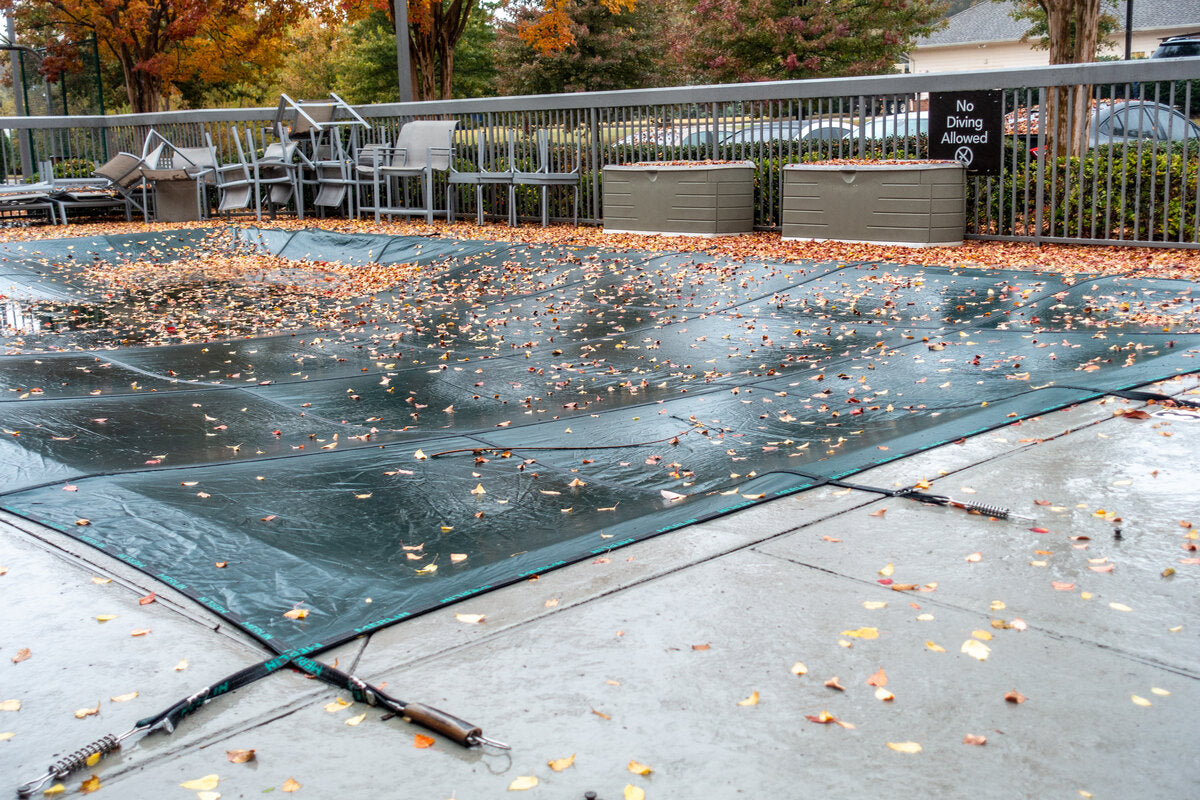
Benefits of Pool Safety Covers That Any Owner Will Love
|
|
Time to read 4 min
|
|
Time to read 4 min
When it comes to ensuring your pool is both safe and well-maintained, pool safety covers are an essential investment. Not only do they provide protection for children and pets, but they also keep your pool clean and reduce energy costs. Whether you're a new pool owner or simply looking to upgrade your pool cover, understanding the ins and outs of pool safety covers is key to making the right choice.
According to the US Department of Energy, swimming pools lose energy in several ways, but evaporation is the biggest culprit by far. Evaporating water demands a significant amount of energy. To put it in perspective, it only takes 1 Btu (British thermal unit) to raise the temperature of 1 pound of water by 1 degree. However, for every pound of water at 80ºF that evaporates, a massive 1,048 Btu of heat is lost from the pool.
The evaporation rate from an outdoor pool can vary depending on several factors, including the pool's temperature, air temperature, humidity, and wind speed at the pool's surface.
Higher pool temperatures, increased wind speeds, and lower humidity levels all contribute to a higher evaporation rate.
In areas with strong winds, adding a windbreak—such as trees, shrubs, or a fence—can help reduce evaporation. However, the windbreak must be high and close enough to the pool to avoid creating turbulence, which could increase evaporation. Additionally, you don’t want the windbreak to block sunlight, as the sun helps heat the pool.
Indoor pools, while protected from outdoor elements, can still lose significant energy through evaporation. These pools require room ventilation to control the humidity caused by evaporation. Ventilated air must be conditioned, further adding to energy costs.
Safety pool covers are effective at minimizing evaporation for both outdoor and indoor pools. Covering a pool when not in use is the most effective way to reduce heating costs, with potential savings of 50%–70%.
For indoor pools, covers not only reduce evaporation but also lessen the need to ventilate indoor air and replace it with unconditioned outdoor air. You can also turn off exhaust fans when the pool is covered, resulting in additional energy savings.
Technically, a large sheet of plastic can serve as a pool cover, as it meets the requirement of being a vapor barrier. However, plastic sheets from a lumber store are not ideal. They are difficult to handle and store, tear easily, and deteriorate rapidly in sunlight. While you can use plastic, it will likely only last 1 to 2 seasons and will be very inconvenient.
It’s best to use a cover specifically designed for swimming pools. These covers are made from special materials, such as UV-stabilized polyethylene, polypropylene, or vinyl. They can be transparent or opaque, and pool safety covers are available in both light and dark colors.
One of the most cost-effective covers designed for pools is the bubble (or solar) cover. Bubble covers resemble bubble wrap but are made from a thicker grade of plastic and include UV inhibitors. Vinyl covers, made from heavier material, have a longer lifespan than bubble covers. Insulated vinyl covers are also available, featuring a thin layer of flexible insulation between two layers of vinyl.
When selecting pool safety covers, thickness is an important factor. Thicker covers generally offer better protection and insulation, making them ideal for colder climates. A thickness of around 12 to 16 mils is typically adequate for most pools. Thicker covers are more durable and can withstand harsher weather, but they may be heavier and more challenging to handle. If ease of use is a priority, a slightly thinner cover might be more practical.
The material of a pool safety cover is crucial. Polyethylene and polypropylene are commonly used materials that offer durability and UV resistance, making them ideal for pool covers.
Mesh covers made from these materials are lightweight and easy to manage. However, for a more robust option, vinyl covers provide superior protection against dirt, debris, and sunlight, helping to prevent algae growth and maintain water clarity. Vinyl covers are generally more durable and can last longer with proper care, making them a worthwhile investment.
The choice between mesh and solid pool safety covers often comes down to personal preference and specific needs as both options have their advantages and disadvantages.
Mesh covers are lighter, easier to install, and allow rain and snow to drain through, reducing the need for a cover pump. However, they do allow some fine debris and sunlight to enter the pool, which can lead to algae growth.
Solid covers, on the other hand, provide complete protection against sunlight and debris, keeping the pool water cleaner but requiring a pump to remove water from the cover.
The Aquamaster series of lightwheight solid covers are up to 50% lighter than conventional vinyl solid covers, but up to 70& stronger. Though, non-porous material blocks sunlight and prevents algae. Durable coating will not fade or stain.
The lifespan of a pool safety covers depend on the material and how well it’s maintained. Mesh covers typically last between 10 and 15 years, while solid covers can last up to 10 years or more with proper care.
Regular cleaning, proper storage during the off-season, and prompt repairs of any small tears or damage can significantly extend the life of your pool cover. While investing in a high-quality cover might cost more initially, it pays off in the long run with greater durability and reliability.
In addition to offering energy savings, pool covers provide several other benefits:
For more information on how safety covers can contribute to your pool’s overall safety and efficiency, check out this guide on pool safety.

